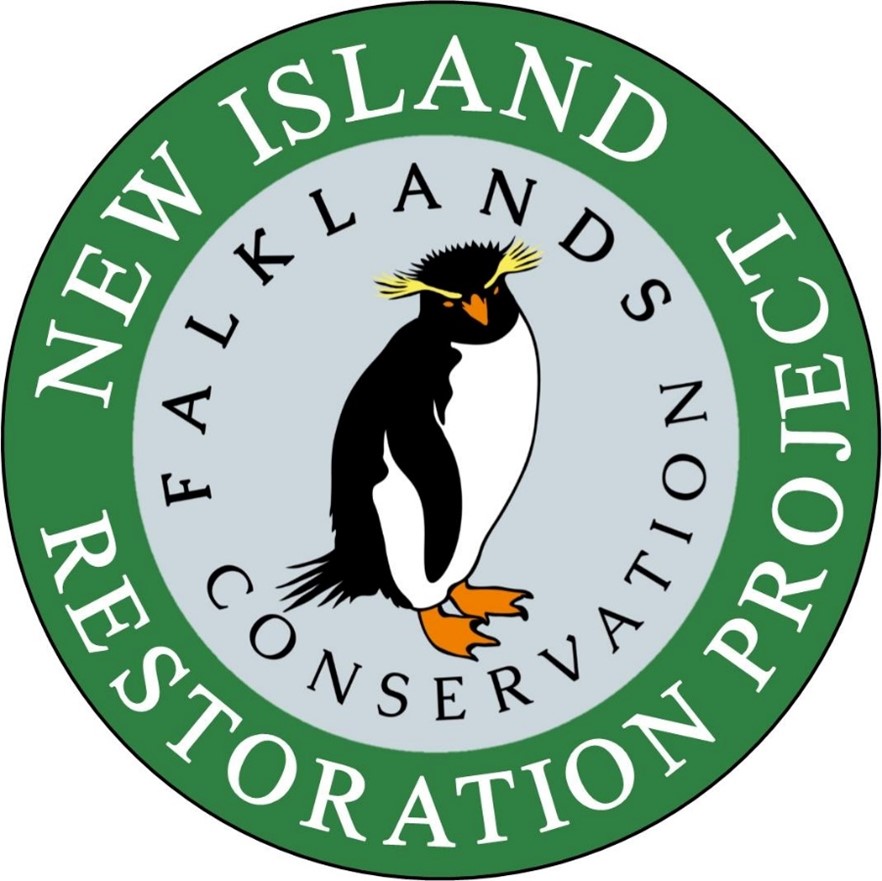 A White-chinned Petrel on a South Atlantic island, photograph by Andy Wood
A White-chinned Petrel on a South Atlantic island, photograph by Andy Wood
UPDATE: Prior to a planned eradiction effort in a few years time, control of feral cats around breeding burrows is proposed, "as well as habitat restoration which could involve tussac planting or creating artificial burrows" (click here).
Vulnerable White-chinned Petrels Procellaria aequinoctialis have suffered a total breeding failure in the 2022/23 summer on New Island in the Falkland Islands/Islas Malvinas*, as reported by the New Island Restoration Project on its Facebook page. “There used to be 30-33 pairs of White-chinned Petrels breeding on New Island. But in a February survey, instead of burrows filled with fluffy chicks, they were all empty. Camera traps reveal invasive predators, cats, rats, and mice using the burrows.” Watch a short video of rodents and a cat at burrow entrances.
However, better days for this beleaguered population may be ahead as the project is working towards eliminating all four species of introduced mammals on the island (click here). Watch also a six-minute video announcing the project.

As well as White-chinned Petrels, New Island also supports a breeding population of Black-browed Albatrosses Thalassarche melanophris, photograph by Deborah Pardo
The Project writes on its website page “Over the course of the next two winters, we will investigate the best course of action for a possible future removal of the invasive species. This will involve trialing non-toxic bait to better understand take-up rates from both target and non-target species and looking at the most effective ways to safeguard native species. We’ll also bolster biosecurity to reduce the risk of new invasive species establishing and causing harm.”

White-chinned Petrels are rare in the Falkland Islands/Islas Malvinas*, with breeding only known from three islands; New Island holds the bulk of the total population, estimated in a 2007 publication as being of a minimum of 55 pairs.
References:
Catry, P., Silva, M.C., MacKay, S., Campos, A., Masello, J., Quillfeldt, P. & Strange, I.J. 2007. Can thin-billed prions Pachyptila belcheri breed successfully on an island with introduced rats, mice and cats? The case of New Island, Falkland Islands. Polar Biology 30: 391–394.
Matias, R & Catry, P. 2008. The diet of feral cats at New Island, Falkland Islands, and impact on breeding seabirds. Polar Biology 31: 609-616.
Quillfeldt, P., Schenk, I., McGill, R.A.R., Strange, I.J., Masello, J.F., Gladbach, A., Roesch, V. & Furness, R.W. 2008. Introduced99 mammals coexist with seabirds at New Island, Falkland Islands: abundance, habitat preferences, and stable isotope analysis of diet. Polar Biology 31: 333-349.
Reid, T., Lecoq, M. & Catry, P. 2007. The White-chinned Petrel Procellaria aequinoctialis population of the Falkland Islands. Marine Ornithology 35: 57-60.
John Cooper, Emeritus Information Officer, Agreement on the Conservation of Albatrosses and Petrels, 10 August 2023, updated 12 August 2023
*A dispute exists between the Governments of Argentina and the United Kingdom of Great Britain and Northern Ireland concerning sovereignty over the Falkland Islands (Islas Malvinas), South Georgia and the South Sandwich Islands (Islas Georgias del Sur y Islas Sandwich del Sur) and the surrounding maritime areas.

 English
English  Français
Français  Español
Español